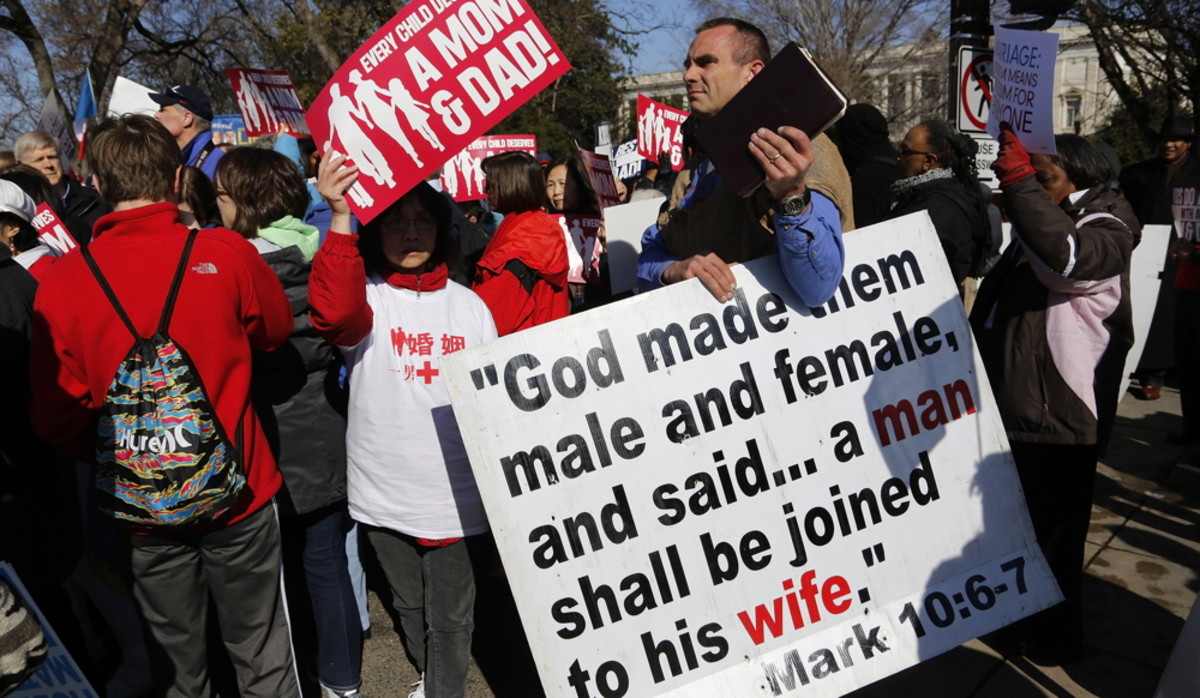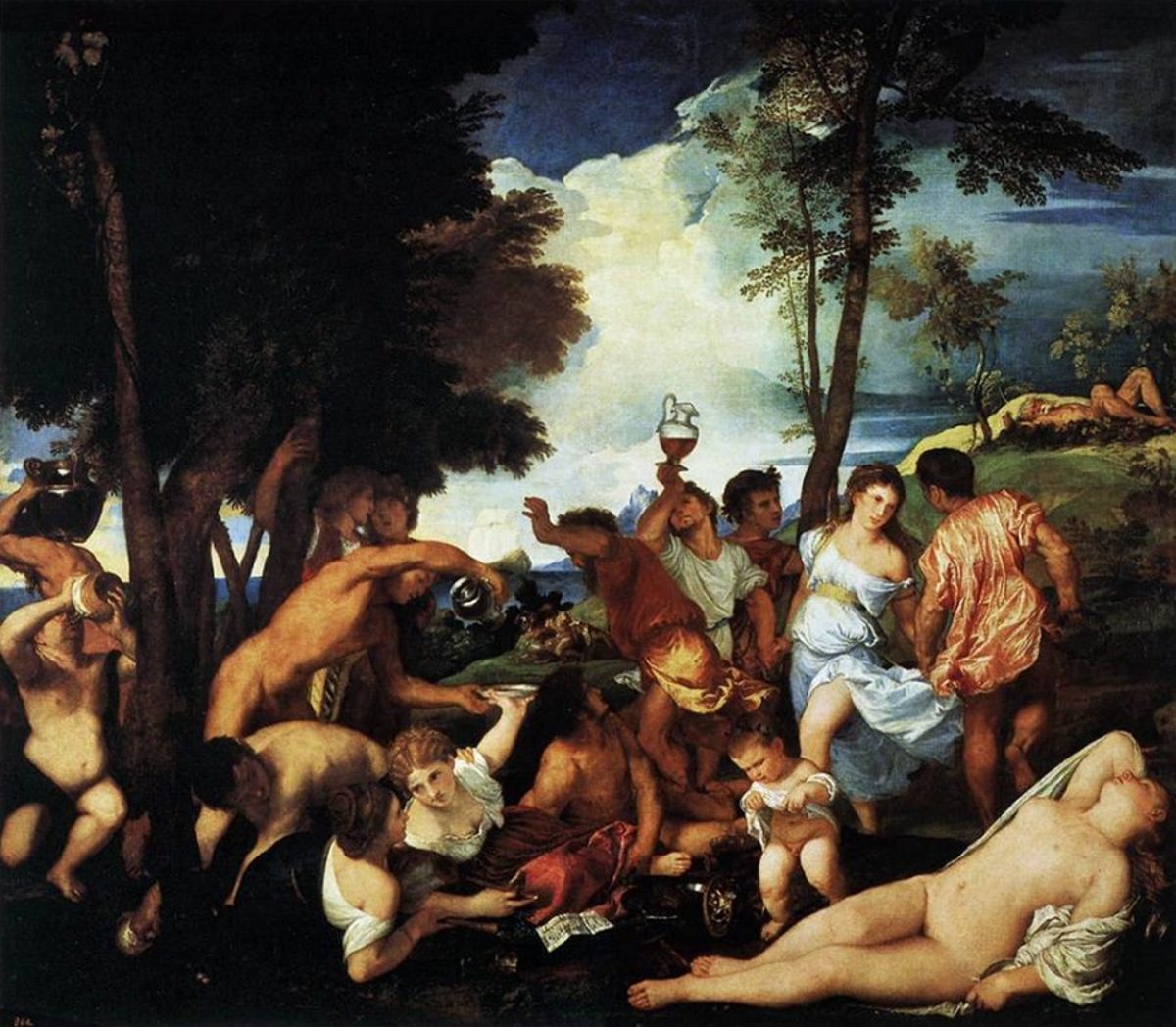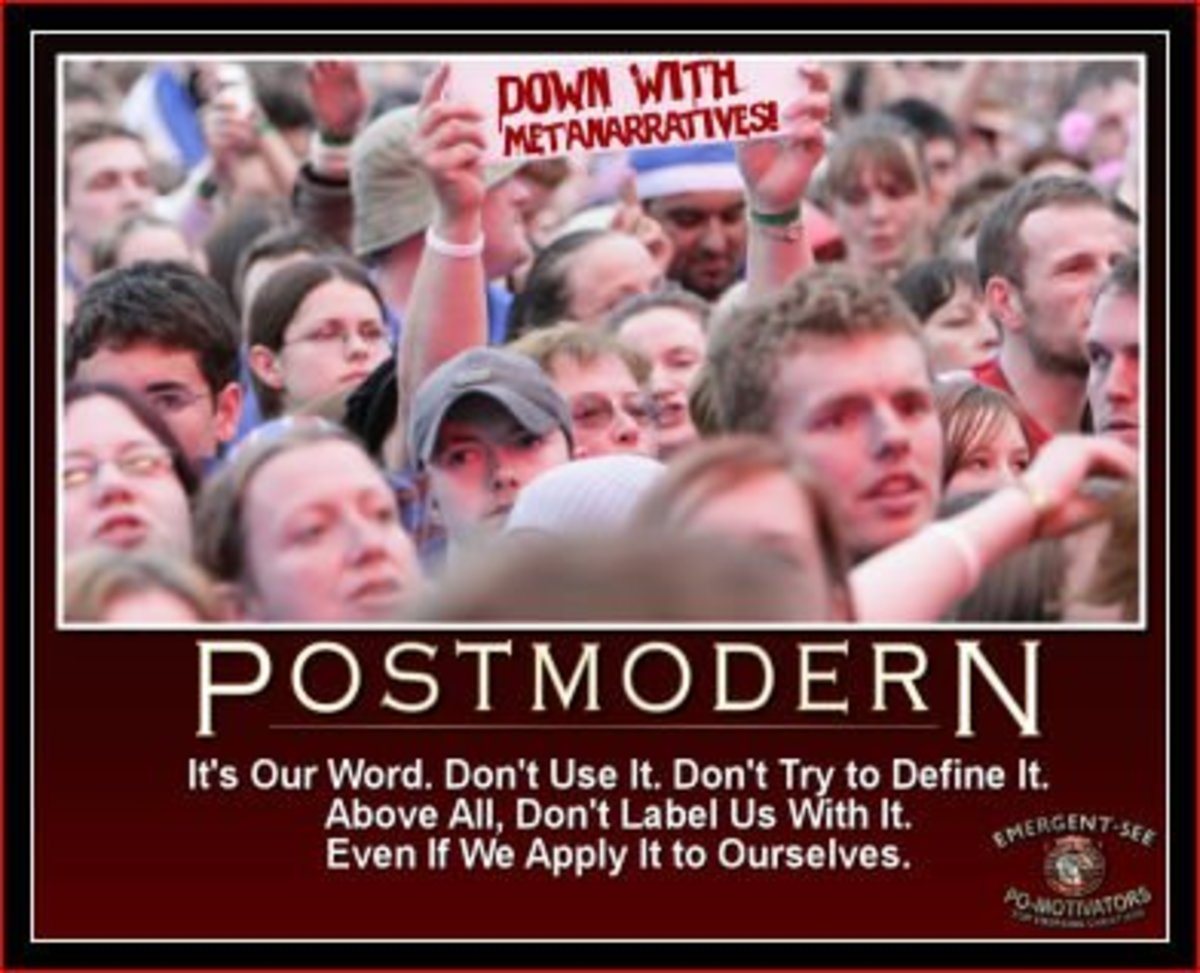Revivalism Versus Post-Modernity
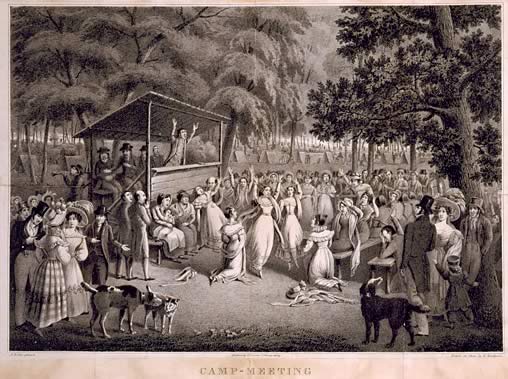
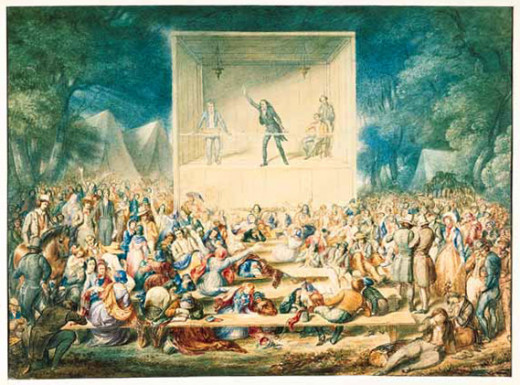
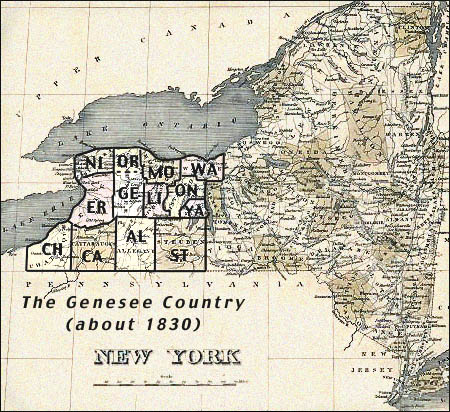
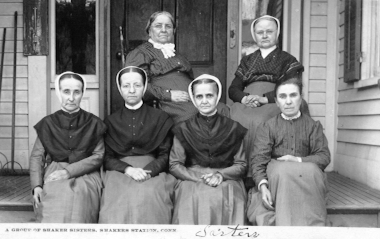

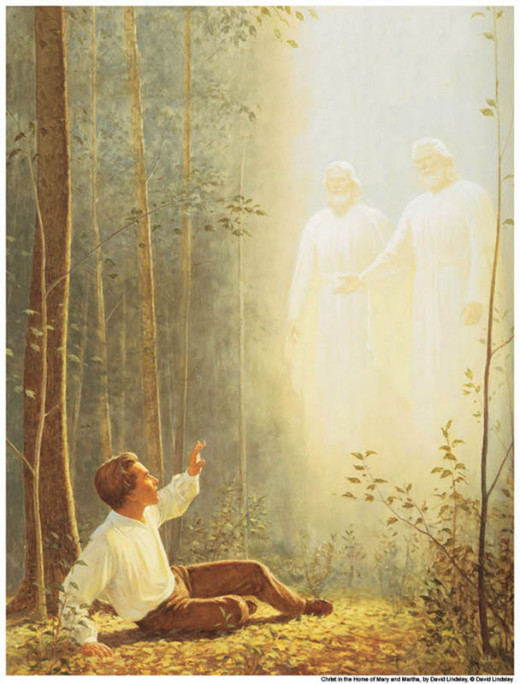
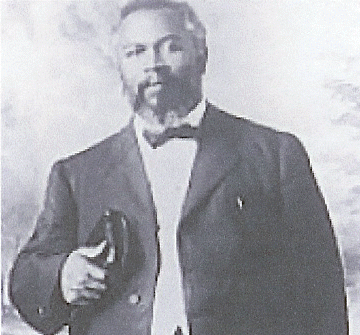
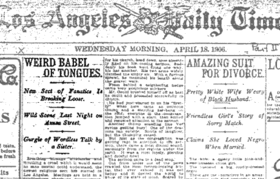



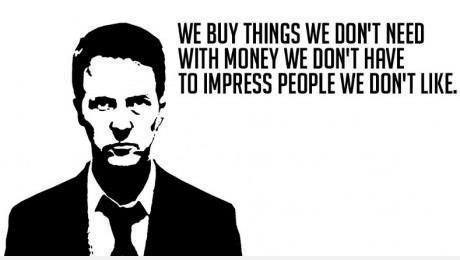

There exists a fascinating connection between the context of the geographically liminal and the religious impulse towards restoring society to an original, lost purity. This urge is termed in the context of religion “restorationism,” which simultaneously attempts to reinstate a primordial stainlessness while also evolving towards the eschatological Kingdom of God. Restorationsim is at odds with our modern, scientific worldview, in which a transcendent God and an overarching meaning of history are absent. In this context, the secular-minded individual must rely solely on the capacities of the human being to progress into an uncertain future. The forum for religious revival is oftentimes the geographic or socially liminal, and it is often critiqued by secular philosophies in the forms of narrative fiction and art. For example, there existed notes of restorationism in the frontier (and thus, liminal) area of the Burned-Over district of New York. Mormonism, the most lasting movement of that geographic and historical context, perhaps best encapsulates all the hopes, zeal, and characteristics of a restorationist movement. However, this restorationism can be found in the more historically proximal context of early Los Angeles Pentecostalism. In this case, it was not only liminal geography that contributed to the movement, but also the marginalized, socially liminal population to which it most profoundly spoke. These impulses to return to pure, lost ancestry, however, are insidious to the secular mind, and the resulting philosophical antagonism finds its expression in important artistic forms. For example, Neal Stephenson’s cyber-punkish novel Snow Crash presents a pseudo-Pentecostal restorationist movement as a global, biological threat that must be stopped, for its irrationality cannot be allowed to infect the world. For Stephenson, scientific and rational progress must not be hindered by non-rational religious impulses, which threaten to cast the human race back into Darwinian infancy. Tony Kushner’s Angels in America likewise exemplifies this secular rejection of heaven-sent warnings, presenting them as hurdles and obstacles to human progress, instead of guidance and divine aid as they might be interpreted from a religious standpoint. Kushner using he trope of the liminal, in this case the socially liminal, homosexual Prior, as the one who is chosen to receive heaven’s prophesy, although he refuses. Finally, in Chuck Palahniuk’s Fight Club, one finds the impulse for pure origins arising from a purely Marxist context. The character Jack is so alienated from his work and himself that he creates an imaginative alter ego, who intends to stomp ruin upon capitalism and American society in order to allow a more primitive form of human culture to develop. However, here, as in the two previous works of fiction, Jack inevitably forsakes and prevents the impulse to return to untainted genesis because of the modern and secular belief that no such pure beginning ever existed and humanity’s only wise course of action is to place its trust in the capabilities of human reason, science, and progress forward into the undetermined future.
Author Harold Bloom once wrote, “Americans never will stop questing for the Primitive Church, in itself a remarkable American interpretive fiction”. (1) While the latter half of this statement seems perhaps stretched (I’m certain this impulse existed in Europe during the Protestant Reformation and in other countries and contexts throughout history), the former appears, within the religious sphere, absolutely certain. Moreover, perhaps nowhere else in American history did there exist more a frenzied desire to realize primitive origins than in the Burned-over District of New York during “the second quarter of the nineteenth century…”. (2) First, we must note that western New York, at that time, constituted a geographic, liminal frontier. Whitney Cross writes, “…the first generation of western New Yorkers included its share of individual eccentrics: the sort which appeared spasmodically on every frontier…[who] usually soon lost identity with the advance of more mature civilization.” (3) Thus, it would seem that the liminal and marginalized character of this specific region “…help[ed] to explain the growth of a distinctive quality in the Burned-over District,”(4) that being its intense religious revivalism. Numerous millennial and restorationist movements bloomed in this religious hotbed. One such movement was Shakerism, which “was established upon a theory of the Second Coming and the millennium. Ann Lee [the founder] represented the second embodiment in human flesh, this time of the feminine spirit of a bisexual God. Her followers lived in a new dispensation.”(5) Perhaps more importantly, the Shakers had very specific notions of how one should live in this new dispensation, which in effect required embodying the Kingdom of God here on earth. They formed a “community of interest, celibacy, nonresistance, [with] full equality of woman in both physical and spiritual life, the direct guidance of the Holy Spirit in personal and community worship…and other Shaker doctrines impossible of execution by unregenerate man [but] could be carried out in the life of this millennial society.”(6) Cross likens such millennial tendencies to disease when he claims “contagion became the more significant as improved communications made each vicinity more conscious of the moral and religious state of its neighbors,”(7) a motif later picked up by the author Neal Stephenson. Regarding Shakerism, Cross states that its “germs of communism, pre-millennialism, spiritualism, and perfectionism could from existing Shaker communities infect larger movements,”(8) which it most certainly did. Figures like Jemima Wilkinson, Talcott Patching, and the prophet Matthias can all be seen to share, to a degree, restorationist qualities first noted in the Shaker movement.(9) However, one can even locate the desire to rediscover the primitive church in the collaboration of the more mainstream denominations. Cross declares that “the conditions of the frontier life probably worked toward cordial interdenominational relations…The Plan of Union itself evinced an early desire to redeem sinners without undue creedal emphasis.”(10) The environment of the spiritual revival, which was almost always interdenominational in character, along with the emphasis on personal experience over and above creed, allowed even the very structure of the evangelical enterprise to appear to embody the single, restored, and unified Church.(11) However, no movement of the Burned-over District has left as lasting an impression as Mormonism.
The Mormon movement, like those mentioned above, arose from the context of western New York, which was “in the early nineteenth century…essentially frontier territory…”.(12) The liminal, frontier character of the movement, however, is also a crucial part of its identity, for the Mormons followed the frontier like the setting sun in a series of exoduses, from New York, to Ohio, Missouri, and finally resting in Utah.(13) Likewise, one can very directly notice the movement’s attempt to reclaim the pure doctrine and practice of the primitive Christian Church as its own. For example, John the Baptist is said to have “[conferred] upon [Joseph and Oliver] the priesthood of Aaron with authority to administer in the temporal affairs of the gospel.”(14) Thus, the church claims that “with this ordination there was restored to earth the same authority to act in God’s name that had been enjoyed in the primitive Church.”(15) Additionally, their very organization, composed of “…Apostles, seventy, elders, high priests, teachers, deacons, evangelists, and bishops…” claimed to be the “same basic organization which had existed in the primitive Church…”(16) Similar to other religious movements of the Burned-over District, Mormonism initially had a millennial quality, as present in its name “Latter-Day,” however this was later de-emphasized, much as Christianity tended to downplay the eschatology of Jesus as the Parousia was further and further delayed. Interestingly, the history of the Latter-Day Saints, consciously, unconsciously, or providentially mimics in very strong tones the history of the Jewish people. Their emphasis on prophecy and revelation, the persecution of their community, the exodus(es) on which they were sent, and the founding of the literal Kingdom of God all strongly echo themes of prophetic Judaism and early Christianity. (17) This yearning to rediscover and materialize the eternal Truth, however, is not merely limited to the Burned-over District of 19th century New York. The liminal quality of that district can be found elsewhere, acting as a peatry dish, breeding the impulse to return to pure roots.
Scholars such as Harold Bloom have claimed that California has become “our new Burned-over District.” (18) Although this is debatable, the existence of restorationist movements within California in liminal areas by marginalized groups is not. Los Angeles itself “has always demonstrated a remarkably high tolerance for spiritual innovators, political cranks, and religious eccentrics.”(19) Nevertheless, perhaps even more important than the liminal quality of the geographic area itself was the liminal quality of the people who were drawn to such movements. “After all, the city was populated by people who came from somewhere else because they were looking for something different.”(20) The founder of Pentecostalism, William Seymour, was himself a black preacher from Louisiana, and the Pentecostal movement gained most of its adherents, at least initially, from the poor, the disconsolate, and those whom society ostracized.(21) Seymour, like the long tradition of restorationists before him, believed that shortly after Pentecost “something went wrong. Instead of announcing the glad news, Christians became smug and indolent. They lapsed into writing meticulous creeds and inventing lifeless rituals.”(22) The story would not end on a down note for Seymour, however, for he believed “there would be a worldwide resurgence of faith, and the healings and miracles that had been so evident in the first years of Christianity would happen again as a prelude to the second coming of Jesus Christ, this time to establish his visible kingdom.”(23) The community surrounding this teaching was racially inclusive, an outward sign that it literally embodied the millennial world-to-come.(24) Clearly then, the liminal, whether geographic or societal, can gain perspective on the human condition because of its distance from the status quo. In this marginal limbo, religious revelation occurs, calling the prophet or seer to revive the original purity of religion by reinstating lost Truth and marching triumphantly forward into the Kingdom. These restorationist impulses, however, find their antithesis in secular fiction, which tends to resist these movements on account of irreconcilable worldviews. Harold Bloom claims that:
Pentecostalism had to begin [in Los Angeles], because its extreme supernaturalism had to be a reaction against triumphant naturalism, against a society where power was enshrined in an abundant materialism. Scholars rightly emphasize that the inaugural wave of American Pentecostalism was a reaction against the Gilded Age, while the second wave was part of the general charismatic upheaval of the 1960s. Without the blatant power of American material achievement, there could have been no stimulus for the antithetical intensity of Pentecostalism.(25)
This passage poignantly reveals the fundamental antagonism between the religious and secular worldviews. For the post-modern, secular human, there exists no God and no transcendent telos (end) that gives history and existence meaning. Thus, attempts to revert to an original purity are perceived as reactionary efforts to relapse into primitive, pre-rational states.
In Neal Stephenson’s cyber-punk novel Snow Crash, the world is jeopardized by a drug/virus/religion that induces the addict/host/believer to spout glossolalic speech. Likewise, it stimulates “complete loss of rational control; dominance of emotion that leads to hysteria; absence of thought or will; automatic functioning of the speech organs; amnesia; and occasional sporadic manifestations such as jerking or twitching.”(26) This ecstatic, non-rational form of religious expression challenges the tenets and society of rational scientism. Interestingly, those most involved in the worldwide movement are refugees (or Refus), whose social marginalization in the book is so extreme that armed forces intend to intercept their arrival at the California coast.(27) Juanita, a central character in the novel, expresses the author’s view on the teleology of this religious movement:
All people have religions. It’s like we have religion receptors built into our brain cells, or something, and we’ll latch onto anything that’ll fill that niche for us. Now, religion used to be essentially viral – a piece of information that replicated inside the human mind, jumping from one person to the next. That’s the way it used to be, and unfortunately, that’s the way it’s headed right now. But there have been several efforts to deliver us from the hands of primitive, irrational religion. The first was made by someone named Enki about four thousand years ago. The second was made by Hebrew scholars in the eighth century B.C….but eventually it just developed into empty legalism. Another attempt was made by Jesus – that one was hijacked by viral influences within fifty days of his death. The virus was suppressed by the Catholic church, but we’re in the middle of a big epidemic that started in Kansas in 1900 and has been gathering momentum ever since. (28)
It is the rational kind of religion, first inculcated by Enki when he shattered the rote, mechanical activity of the Sumerians, forcing them to construct original thoughts, that counteracted the pestilential spread of the Asherah cult, the archetypal mother of all ecstatic religions. This emphasis on diversity, over and against mindless homogeneity, in conjunction with a preference for rational, natural (as opposed to supernatural) religion is clearly the result of a secularized, modern, scientific culture in which the non-rational is construed as threatening and regressive. Thus, ecstatic forms of worship, in the context of Snow Crash, are seen as manipulative, superficial, and farcical, for not only do the characters of L. Bob Rife and Reverend Wayne earn money from their evangelistic enterprise, but Wayne, along with Elvis, replace the Father and Holy Spirit as members of the Trinity.(29) The rejection of liminal, restorationist movements by the secular mind is not unique to Snow Crash, however, for the same sentiment can be noticed in Angels in America.
Within the context of Tony Kushner’s Angels in America, it is Prior, a sexually and emotionally liminal (he is homosexual and has been abandoned by his lover) character that receives the heavenly revelation that humans must stop progressing and moving forward towards their inevitable destruction. In a telling scene it is revealed that “in making people God apparently set in motion a potential in the design for change, for random event, for movement forward.”(30) Thus, “human progress…Migration. Science. Forward motion…shakes up Heaven.”(31) Prior explains that “the angels think…it’s all gone too far, too much loss is what they think, we should stop somehow, go back.”(32) As the Angel herself states:
Surely you see towards what We are Progressing:
The fabric of the sky unravels:
Angels hover, anxious fingers worry
The tattered edge.
Before the boiling of blood and the searing of skin
Comes the Secret catastrophe:
Before Life on Earth becomes finally merely impossible,
It will for a long time before have become completely unbearable.
(coughs)
YOU HAVE DRIVEN HIM AWAY! YOU MUST STOP MOVING!(33)
But the angels’ wish is not to be, because, as is often stated in the play by more than one character, “the world…only spins forward.”(34) This sentiment is perfectly encapsulated in Prior’s rejection of the angelic “Tome if Immobility, of respite, of cessation”(35) when he states, “we can’t just stop. We’re not rocks – progress, migration, motion is…modernity. It’s animate, it’s what living things do. We desire. Even if all we desire is stillness, it’s still desire for. Even if we go faster than we should. We can’t wait. And wait for what?”(36) Only in the atheistic, post-modern, rational worldview can one be completely free of constraining political theory and God Himself.(37) Finally, in forsaking these things, one notes that faith/trust, once placed in God and his revelation concerning His Kingdom and restored purity, is now located in human reason and progress. Harper claims that dead souls will eventually repair the ozone layer because “nothing’s lost forever. In this world, there is a kind of painful progress. Longing for what we’ve left behind, and dreaming ahead.”(38) Therefore, for the post-modern individual the only rational choice humanity has is to continue to move forward, trusting not in a God whose existence makes all reality meaningful, but instead in human ingenuity and scientific progress, which must cope with the unknown of the future and the problems of the present.
In Chuck Palahniuk’s novel Fight Club, one finds the threat of a return to pure origins in a philosophical, specifically Marxist, context. The character Jack has become so alienated from his work, and his own identity, he creates an alter ego – Tyler Durden.(39) The alienation between worker and product becomes internalized within Jack, in effect creating the internal space, the disconnectedness, that can rightly designate him as being in a liminal existential state. Likewise, in true Marxist fashion, Tyler and Jack are disgusted with consumerism. “Deliver me from Swedish furniture. Deliver me from clever art…May I never be complete. May I never be content. May I never be perfect,”(40) prays Jack. After committing small acts of class vandalism, such as peeing in expensive perfume bottles and tainting rich people’s food with various bodily substances, Tyler unleashes Project Mayhem, which intends to destroy modern society and start anew. He claims, “We don’t have a great war in our generation, or a great depression, but we do, we have a great war of the spirit. We have a revolution against the culture. The great depression is our lives. We have a spiritual depression.”(41) Modern culture’s spiritual wasteland is well characterized and explained:
‘What you have to understand, is your father was your model for God…If you’re male and you’re Christian and living in America, your father is your model for God. And if you never know your father, if your father bails out or dies or is never at home, what do you believe about God?…What you have to consider…is the possibility that God doesn’t like you. Could be, God hates us. This is not the worst thing that can happen.’ How Tyler saw it was that getting God’s attention for being bad was better than getting no attention at all. Maybe because God’s hate is better than His indifference…We are God’s middle children…with no special place in history and no special attention.(42)
This passage illustrates again the central difference between religious and secular worldviews. The secular world finds itself without any divine guidance, stuck in a time and place that lacks any kind of over-arching meaning, where the religious mentality is guided by a transcendent God, whose existence gives the history of man, from pure origins, to fall, to restoration, meaning. At the climax of the narrative Jack commits suicide to prevent Tyler from bringing to fruition his plot to reduce the world to so primitive a state that people would be “stalking elk through the damp canyon forests around Rockefeller Center.”(43) The secular, indeed Nietzchean, mindset directly confronts the religious when Jack is questioned by God Himself in Heaven:
‘Why?’ Why did I cause so much pain? Didn’t I realize that each of us is a sacred, unique snowflake of special unique specialness? Can’t I see how we’re all manifestations of love? I look at God behind his desk, taking notes on a pad, but God’s got this all wrong. We are not special. We are not crap or trash, either. We just are. We just are, and what happens just happens. And God says, ‘No, that’s not right.’ Yeah. Well. Whatever. You can’t teach God anything.(44)
Clearly then, one can see that the secular and religious worldviews are mutually exclusive – one must either believe in the existence of a God, which gives all of history and existence meaning, or the absence of such a God, which forces the individual to approach this life and world relying solely on humanity’s scientific and rational capacities.(45)
The liminal, in its geographic, social, sexual, or existential forms, tends to constitute the environment from which the call to return to pure origins sounds. One can note such an occurrence in the Burned-over District of Western New York in the early 1800s. Groups, such as the Shakers, and especially the Mormons, claimed to be restoring the Truth in its purest form, pointing back to the Primitive Church while simultaneously looking forward to the Kingdom of God. The Pentecostal movement of Los Angeles in the early 1900s likewise tried to move the world from its theologically liminal position towards the Millennium by reinstating ancient, lost religious practices through new and constant revelation. However, to the secular mind, this call to original purity is issued from a worldview fundamentally at odds with its own. Because the modern, secular mentality is atheistic, and thus denies the existence of humanity’s untainted beginnings, restorationist movements are seen as threatening to reverse human progress and reduce mankind to irrational, intellectual infancy. This threat is well expressed in Neal Stephenson’s Snow Crash, for the liminal and globally dispossessed are infected with a drug/virus/religion that induces non-rational behavior and complacency. The resistance to reactionary religious movements can also be seen in Tony Kushner’s Angels in America, where the sexually and emotionally liminal prophet Prior rejects the mandate from heaven to halt human progress. The literal absence of God in the play and the often-stated belief that humans can only move forward are both fundamental tenets of a post-modern, rational worldview. Finally, in Palahniuk’s Fight Club, the call to original purity sprouts from a non-religious, Marxist setting, yet the secular mentality and its trust in scientific progress triumph again, for Jack ultimately prevents Tyler from completing his plan to totally unravel American culture. Thus, the perceptive scholar can note two crucial themes that emerge from these historical and artistic sources – not only does the quality of liminality frequently generate restorationism, but secular and religious worldviews are fundamentally at variance with one another. The former, lacking any transcendent referent that would give life a teleological meaning, trusts that science and human ingenuity will be able to correct both current and future dilemmas, dilemmas which those very institutions tend to create; the latter consigns itself to God, whose existence gives meaning to history and human existence, and whose revelation guides humans to the place where history ends and original purity and promised Paradise collapse into one.
Works Cited
[1] Harold Bloom, The American Religion: The Emergence of the Post-Christian Nation. (New York: Simon and Schuster, 1992), 180.
[2] Whitney R. Cross, The Burned-over District: The Social and Intellectual History of Enthusiastic Religion in Western New York, 1800-1850. (Cornell University Press, 1950), 3.
[3] Cross, 36.
[4] Cross, 40.
[5] Cross, 31.
[6] Cross, 31.
[7] Cross, 12.
[8] Cross, 32.
[9] Cross, 33 + 39.
[10] Cross, 40.
[11] Cross, 42.
[12] The Church of Jesus Christ of Latter-day Saints, Truth Restored. (USA: Intellectual Reserve, 2001), 1.
[13] The Church of Jesus Christ of Latter-day Saints, 56.
[14] The Church of Jesus Christ of Latter-day Saints, 20.
[15] The Church of Jesus Christ of Latter-day Saints, 22.
[16] The Church of Jesus Christ of Latter-day Saints, 44.
[17] Bloom, 84.
[18] Bloom, 181.
[19] Harvey Cox, Fire From Heaven: The Rise of Pentecostal Spirituality and the Reshaping of Religion in the Twenty-First Century. (Addison-Wesley, 1995), 51.
[20] Cox, 51.
[21] Cox, 48.
[22] Cox, 47.
[23] Cox, 47.
[24] Cox, 49.
[25] Bloom, 177.
[26] Neal Stephenson, Snow Crash. (New York: Bantam Books, 1992), 206.
[27] Stephenson, can’t remember the page.
[28] Stephenson, 201.
[29] Stephenson, 195.
[30] Tony Kushner, Angels in America Part 2: Perestroika. (New York: Theatre Communications Group, 1992), 42.
[31] Kushner, Angels in America Part 2: Perestroika, 42.
[32] Kushner, Angels in America Part 2: Perestroika, 44.
[33] Kushner, Angels in America Part 2: Perestroika, 44.
[34] Kushner, Angels in America Part 2: Perestroika, 44.
[35] Kushner, Angels in America Part 2: Perestroika, 131.
[36] Kushner, Angels in America Part 2: Perestroika, 130.
[37] Kushner, Angels in America Part 2: Perestroika, 14, and Tony Kushner, Angels in America Part 1: Millennium Approaches. (New York: Theatre Communications Group, 1992), 74.
[38] Kushner, Angels in America Part 2: Perestroika, 142.
[39] Chuck Palahniuk, Fight Club. (New York: Owl Books, 1996), 25-33.
[40] Palahniuk, 46.
[41] Palahniuk, 149.
[42] Palahniuk,, 140-1.
[43] Palahniuk,, 199.
[44] Palahniuk,, 207.
[45] This distinction between religious and non-religious can be found in the writings of Nietzsche and find their theological expression in Altizer’s “The Death of God Theology”.













